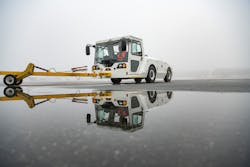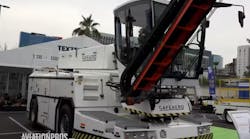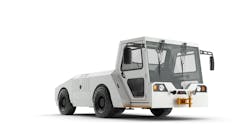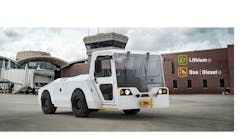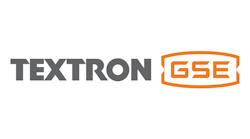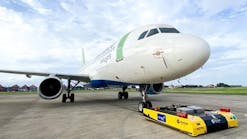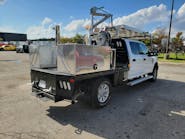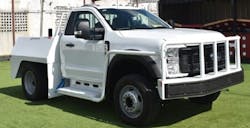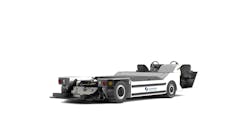To address the needs of ground service providers handling the movements of aircraft, officials at Textron GSE sought to provide flexibility.
Engineers expanded the company’s TUG ALPHA family with a tractor designed for narrow-body pushback with a max drawbar rating of 24,000 lbs., a max gross vehicle weight of 35,000 lbs. and the ability to support aircraft up to the A321 or B737.
But beyond the flexibility offered with the line of TUG ALPHA pushbacks, Textron GSE developed multiple powertrains for its TUG ALPHA 1 model.
“As part of the design process for the TUG ALPHA 1, the team was cognizant of delivering a product that would drive efficiencies for customers. Engineers considered the future of airport operations and the objective to have more sustainable equipment that would benefit the environment and offset carbon emissions,” explains Matt Chaffin, VP and GM at Textron GSE.
The TUG ALPHA 1, which was introduced by Textron GSE in October 2020, is available in three models – lithium, diesel and a gasoline model specifically built to handle commercial aircraft.
“Offering three models means the TUG ALPHA 1 can be used around the globe based on the needs of our customers,” Chaffin says. “All models feature drive-by-wire technology, are CE certified and available in Tier 3, Tier 4 Final and Stage V configurations for global use.”
Powertrain Options
According to Textron GSE officials, the company’s diverse customer base often has differing needs and infrastructure, so the TUG ALPHA 1 was designed to have multiple powertrains, including diesel.
“Many international customers operate diesel products and rely on the power offered by diesel engines. The TUG ALPHA 1 was designed to meet or exceed all EU emission requirements and has been purpose-built with the future in mind,” Chaffin says.
The gasoline-powered version of the TUG ALPHA 1 does not require the extensive aftertreatment that diesel engines do, which can save customers time and money.
“The TUG ALPHA 1 is the only gas narrow-body pushback specifically built to handle commercial aircraft that delivers comparable torque, power and run-time to diesel solutions,” Chaffin points out. “The gas model also offers low operating costs compared to diesel vehicles due to lower fuel prices and reduced maintenance expense.”
Additionally, the gas and diesel models can be upgradeable to a lithium powertrain once a customer’s and an airport’s eGSE infrastructure is in place.
“This means customers do not have to invest in new equipment and can utilize existing products and transform them with a lithium powertrain,” Chaffin says.
The lithium TUG ALPHA 1 offers a number of advantages over lead acid technology, according to Chaffin, noting the battery-powered unit delivers eco-friendly performance that can handle the requirements of daily pushback operations.
“With no battery maintenance, such as battery watering, the TUG ALPHA 1 increases the productivity of the crew and reduces operating expense. The battery also charges twice as fast as lead acid, which means you consume less electricity to charge the vehicle, resulting in lower power bills,” Chaffin says, adding the TUG ALPHA 1 can accommodate most EV charging stations like a PosiCharge or Minit Charger and an optional J1772 on-board charger is also available to allow users to charge the pushback by plugging into a standard 110V or 220V outlet.
The TUG ALPHA 1 was designed to perform 12 pushbacks at maximum capacity per charge. Chaffin says this is equivalent to pushing a fully loaded A321 for 1,000 yards, or 10 miles of travel unloaded, which equates to approximately 3-6 percent of charge per push. The lithium technology can also make use of opportunity charging to extend the vehicle’s run-time, if needed.
“The Battery Management System (BMS) installed on the TUG ALPHA 1 utilizes a telemetry system that monitors the health and performance of the battery. The BMS is basically the brains behind lithium technology, and its job is to ensure the battery is performing as expected by reviewing things like state-of-charge levels, battery temperature, etc.,” Chaffin says. “If anything faults and produces levels that require attention, the BMS system will shut down the battery until the issue is resolved.”
Additional Features
The TUG ALPHA 1 was developed to feature automotive style throttle and braking. The pushback also offers creep forward functionality as a driver lifts his or her foot off the brake, which allows crew members to inch forward when connecting the plane.
“All models are also equipped with everything you need from LED headlights, E-stops and even fender storage areas perfect for small equipment like batons or vehicle chocks,” Chaffin says.
The cabin area was engineered for three people and centrally positions the driver for enhanced visibility to the tow-bar. Ergonomic features and other characteristics like suspension seating, tilt steering and an easy-to-reach touchscreen control panel are designed for user comfort while audio jacks located in the front and rear of the vehicle ensure clear communication with crew members.
“The TUG ALPHA 1 also has plenty of options for customers to consider including full or economy cab, HVAC system, maintenance jacks and a J1772 on-board charger for the lithium model,” Chaffin adds.
Currently, Textron GSE has several demo units deployed with customers who operate narrow-body aircraft.
“Feedback has been very positive, and customers have been impressed with the functionality, safety and all the standard features that the TUG ALPHA 1 offers,” Chaffin notes.
“Part of the Textron GSE new product development process is to include feedback from its customers regarding vehicle use, working conditions and functionality,” he adds. “This collaboration explored all facets from vehicle design to its operation and identified opportunities to enhance performance beneficial to the customer.”
The TUG ALPHA family consists of four products – the TUG ALPHA 1, TUG ALPHA 3, TUG ALPHA 4 and TUG ALPHA 5 – built to handle aircraft of varying weights.
The TUG ALPHA 1 utilizes common parts found across the TUG ALPHA family, reducing the number of unique parts required to perform maintenance.
When spec’ing pushbacks, ground handlers need to consider ballast weight, which is important as it relates to the gross vehicle weight of the aircraft; pushback distance and functionality; performance requirements such as governed speed, cab, lights, etc.; the working environment, such as snow, ice and inclines, as draw bar calculations factor in all conditions and necessary requirements; and safety enhancements like handrails and remote maintenance components.
General pushback maintenance may include inspecting the vehicle’s lighting; ensuring tires have adequate tread and are inflated to the proper pressure; checking hitch components for abnormal wear; performing daily fluid checks and routine scheduled maintenance as outlined in the owner’s manual.
“Selecting the proper pushback based on the aircraft and job performed ensures you have the right product to support on-time departures,” Chaffin concludes.
